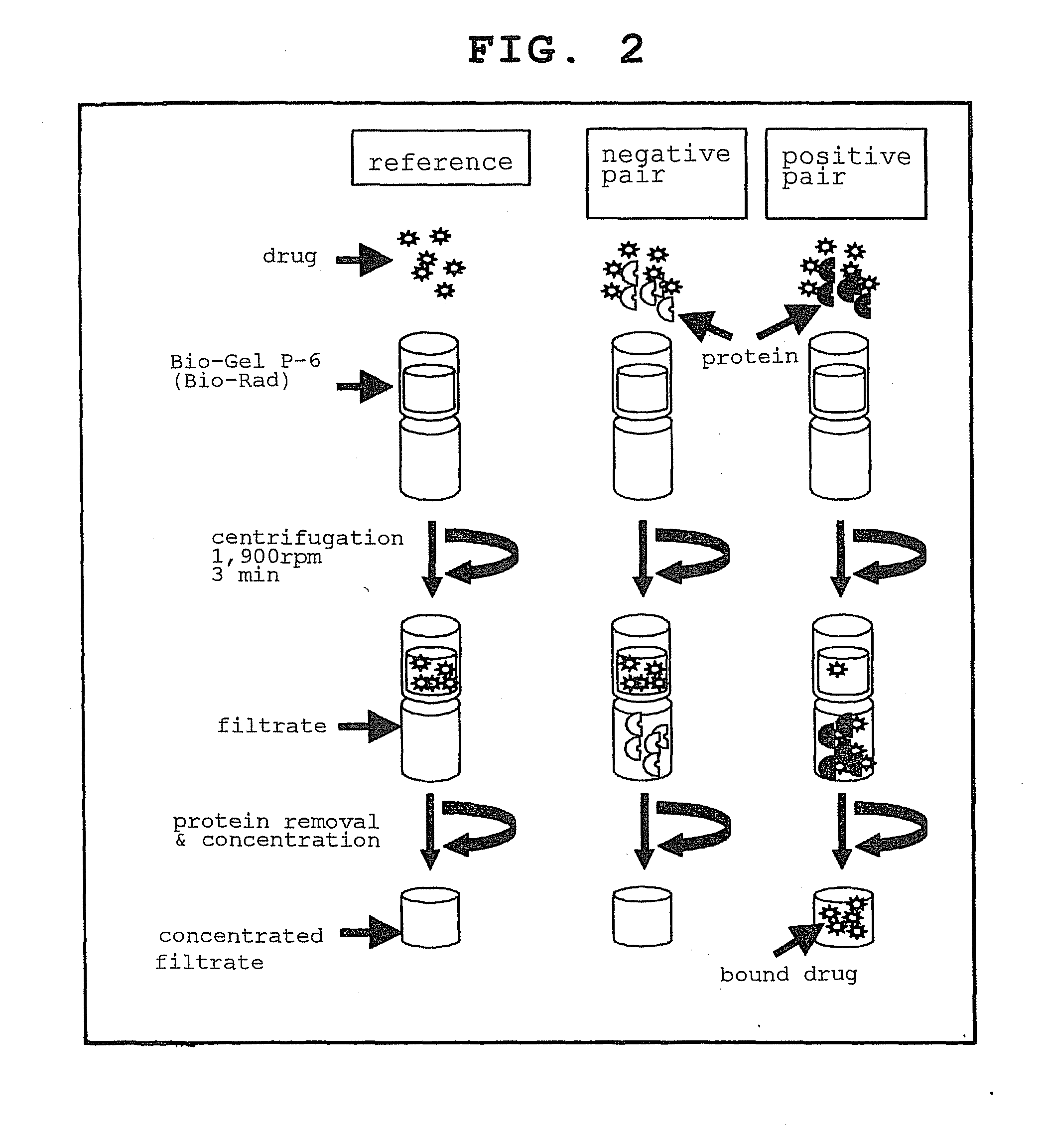Target protein and target gene in drug designing and screening method
a technology applied in the field of target proteins and target genes, can solve the problems of high cost of research and development expenditures, serious arrhythmias, and much of the mechanism of allergic diseases per se,
- Summary
- Abstract
- Description
- Claims
- Application Information
AI Technical Summary
Benefits of technology
Problems solved by technology
Method used
Image
Examples
reference example 1
Method of Expressing Proteins from Human Full-Length cDNA Clone
[0325]BP-reaction was performed on human full-length cDNA clone and the cloning vector Gateway pDONR201 by the PCR cloning method using the Invitrogen Gateway system to yield an entry clone. LR-reaction was performed on this entry clone with the destination vector pDEST17 (Gateway System) and LR Clonase at 25° C. for 60 minutes to yield an expression plasmid. Escherichia coli competent cell BL21star(DE3)pLysS were transformed with this expression plasmid, a clone incorporating the expression vector was selected, and a frozen stock was prepared. The transformant was inoculated into LB medium and precultured, after which it was transferred into SB medium and cultured to induce the expression by IPTG, and the cells were stored frozen.
reference example 2
Method of Purifying the Expressed Protein of Human Full-Length cDNA Clone
[0326]A human full-length cDNA clone was expressed as a protein with an N-terminal His tag. This clone was purified using BioRobot 8000 (Qiagen) or ACTA Crystal (Amersham). In the purification with BioRobot 8000, the expression-induced frozen stock cells in Reference Example 1 was thawed and lysed with lysozyme, after which the cells were affinity-purified using Ni-NTA Superflow 96 BioRobot Kit (Qiagen). In the purification with ACTA Crystal, affinity purification using a HisTrap HP column was followed by gel filtration purification using the Gel Filtration Column HiLoad 16 / 60 or a 10 / 30 Superdex 75 prep grade column. The purified fraction was used for interaction analysis after being subjected to SDS-PAGE to verify the estimated molecular weight and purity.
reference example 3
Method of Analyzing Human Protein-Drug Interactions Using Size Exclusion Chromatography
[0327]To analyze the interactions between commonly used drugs and proteins expressed from human full-length cDNA clones while keeping both the proteins and the compounds in non-modified, non-immobilized state, size exclusion chromatography (SEC) and mass analysis were used in combination (FIGS. 1 and 2). The specific procedures are shown below.
Step 1
[0328]A solution of a single drug or a multiplexed compound solution comprising a mixture of a plurality of drugs (e.g., 8 kinds, 16 kinds, 24 kinds) was added to the protein purified in Reference Example 2.
Step 2
[0329]The compound-protein mixture prepared in step 1 was subjected to chromatography using an SEC column, the compound and the protein were separated by SEC, and the bound compound or compound that interacted with the protein in the protein fraction was analyzed using a mass analyzer.
[0330]The purified protein standard was concentrated by
[033...
PUM
| Property | Measurement | Unit |
|---|---|---|
| culture temperature | aaaaa | aaaaa |
| dry volume | aaaaa | aaaaa |
| flow rate | aaaaa | aaaaa |
Abstract
Description
Claims
Application Information
 Login to View More
Login to View More - R&D Engineer
- R&D Manager
- IP Professional
- Industry Leading Data Capabilities
- Powerful AI technology
- Patent DNA Extraction
Browse by: Latest US Patents, China's latest patents, Technical Efficacy Thesaurus, Application Domain, Technology Topic, Popular Technical Reports.
© 2024 PatSnap. All rights reserved.Legal|Privacy policy|Modern Slavery Act Transparency Statement|Sitemap|About US| Contact US: help@patsnap.com










